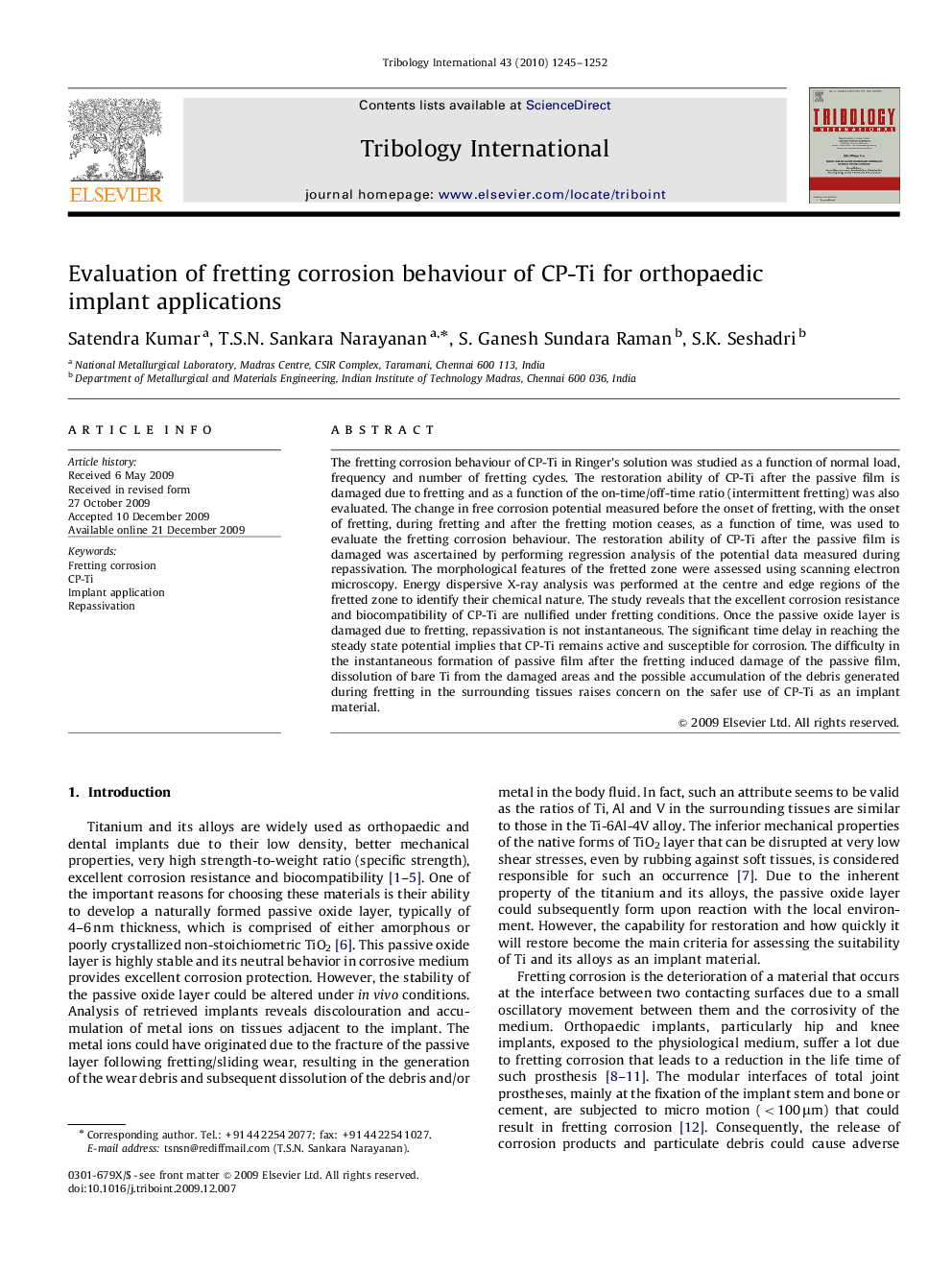| Article ID | Journal | Published Year | Pages | File Type |
|---|---|---|---|---|
| 615852 | Tribology International | 2010 | 8 Pages |
The fretting corrosion behaviour of CP-Ti in Ringer's solution was studied as a function of normal load, frequency and number of fretting cycles. The restoration ability of CP-Ti after the passive film is damaged due to fretting and as a function of the on-time/off-time ratio (intermittent fretting) was also evaluated. The change in free corrosion potential measured before the onset of fretting, with the onset of fretting, during fretting and after the fretting motion ceases, as a function of time, was used to evaluate the fretting corrosion behaviour. The restoration ability of CP-Ti after the passive film is damaged was ascertained by performing regression analysis of the potential data measured during repassivation. The morphological features of the fretted zone were assessed using scanning electron microscopy. Energy dispersive X-ray analysis was performed at the centre and edge regions of the fretted zone to identify their chemical nature. The study reveals that the excellent corrosion resistance and biocompatibility of CP-Ti are nullified under fretting conditions. Once the passive oxide layer is damaged due to fretting, repassivation is not instantaneous. The significant time delay in reaching the steady state potential implies that CP-Ti remains active and susceptible for corrosion. The difficulty in the instantaneous formation of passive film after the fretting induced damage of the passive film, dissolution of bare Ti from the damaged areas and the possible accumulation of the debris generated during fretting in the surrounding tissues raises concern on the safer use of CP-Ti as an implant material.
